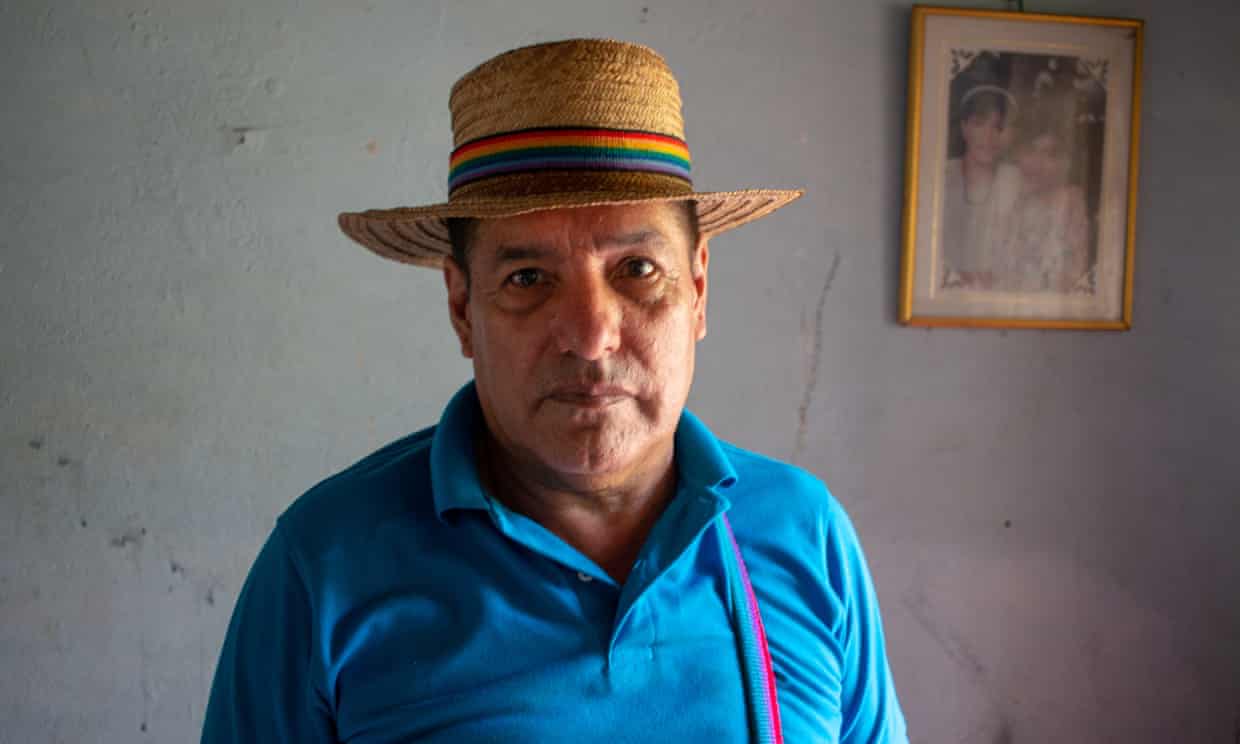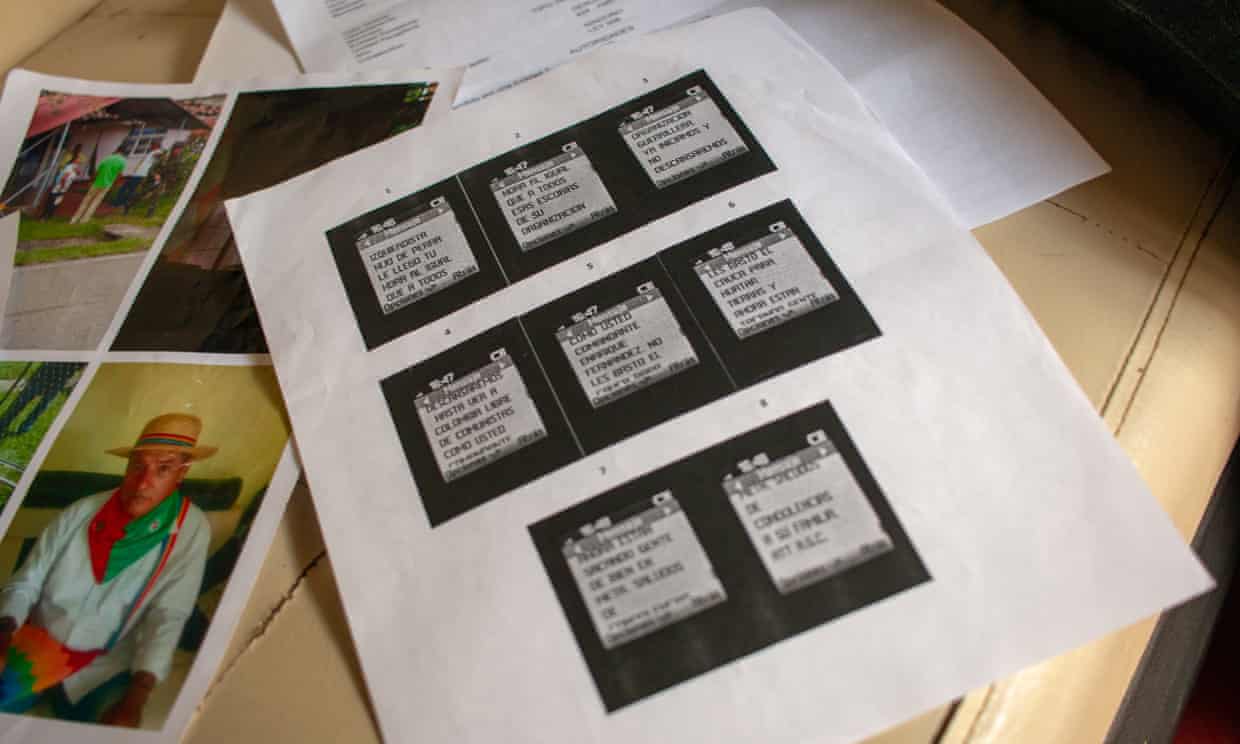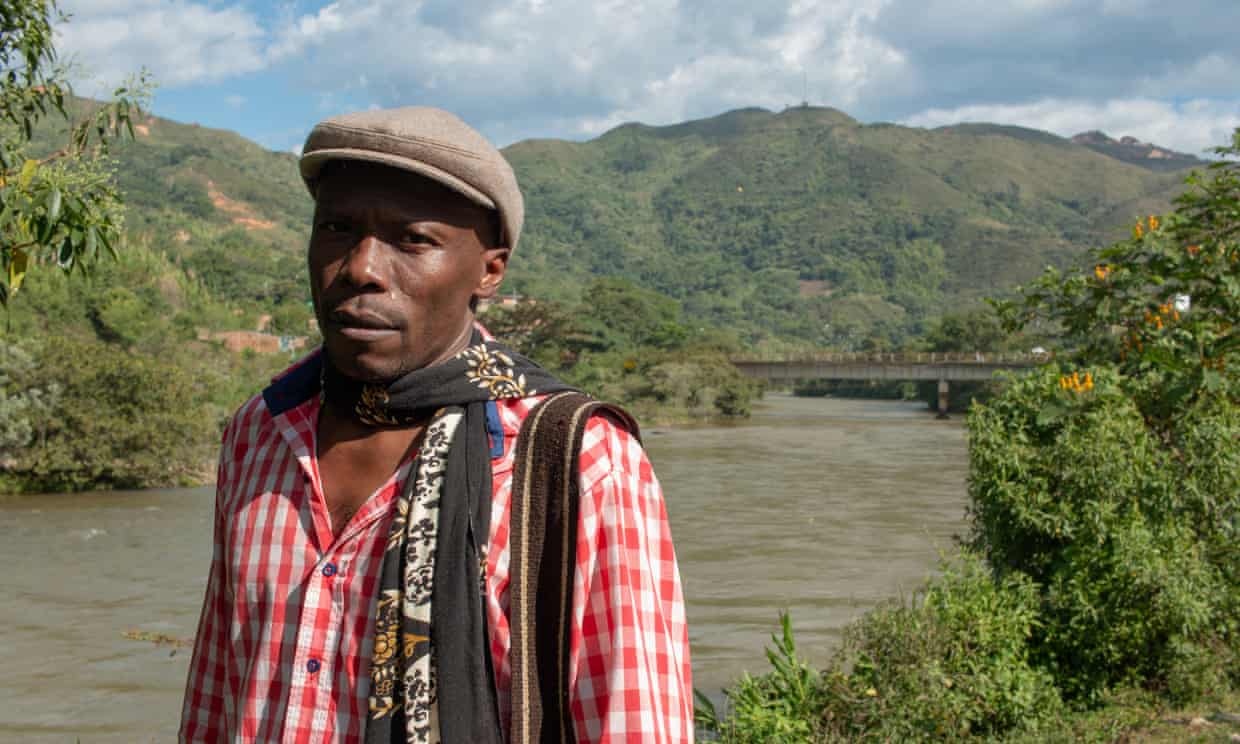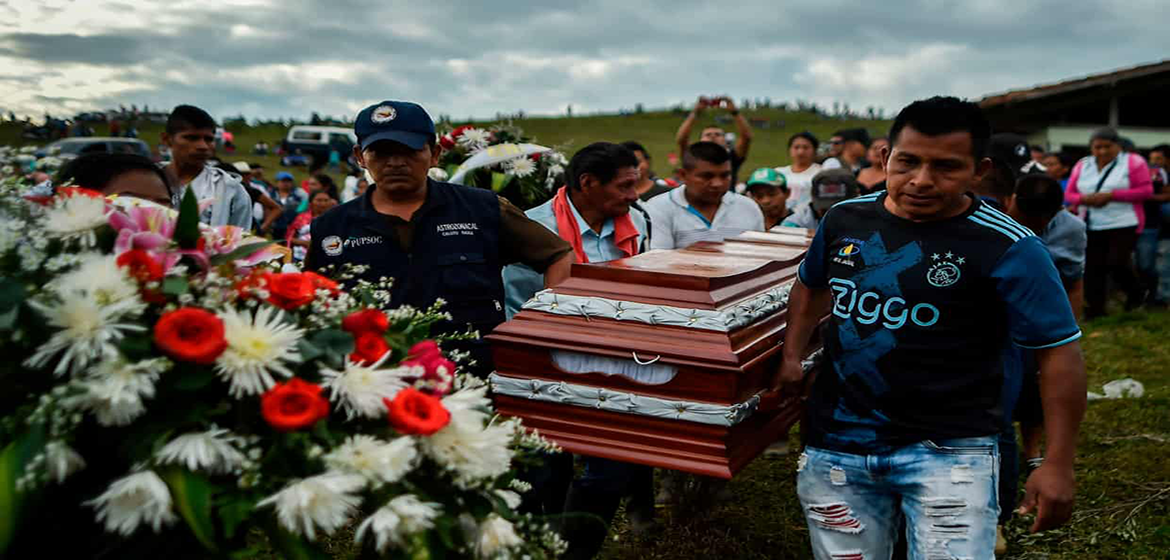Nearly two years after the signing of a historic peace agreement, violence in the country continues
By Joe Parkin Daniels in Bogotá
Enrique Fernández cannot remember the last night he slept peacefully.
He is tall and heavyset, and does not look like someone who scares easily, but as he sits in his humble rented home in western , his eyes dart nervously from left to right, scanning for any threat.
Any moment could be his last, he says.
When a teenaged ice-cream vendor approaches the front door Fernández scurries anxiously to a back room, convinced the youth is helping set up an attempt on his life.
It is not paranoia. Fernández – a leader of the Nasa indigenous tribe and an outspoken defender of the environment – has had a price on his head for months.
In February a bomb was left outside his family home. The explosive was disarmed by the army, but the message was clear: he had to move.
Last month a volley of phone calls and text messages threatened him again. “We will not rest until Colombia is free from communists like you,” the messages read. “Condolences to your family.”
Since the beginning of 2016 – , the Revolutionary Armed Forces of Colombia (or Farc) – some 311 activists, community leaders, and human rights defenders have been murdered, according to the national human rights office.
At least 123 of those killings took place in the first six months of this year, in what the country’s human rights ombudsman described as “an extermination”.
The 2016 deal was supposed to , but while military casualties have dropped dramatically, activists and “social leaders” – those who are trying to implement peace at the grassroots level – are living in constant fear.

Enrique Fernández survived an assassination attempt in February this year. He says he hasn’t slept a full night since then. Photograph: Joe Parkin Daniels for the Guardian
President Iván Duque, who took office on 7 August, has promised to ramp up protection efforts for activists. But given his close political alliance with former president Álvaro Uribe – – leaders in Cauca are sceptical.
More leaders have been threatened or killed in this rugged Andean province than any other part of Colombia. Many of them are from the indigenous and Afro-Colombian communities which make up 50% of the province’s population.
Cauca’s fertile soil and untapped gold deposits have often led to fierce conflicts over land. But conditions in the province are also perfect for growing coca – the base ingredient in cocaine – making it a prized territory for criminal groups.
Now the province is the setting for a new set of interlocking conflicts between dissident fighters who refused to disarm, smaller rebel groups and criminal gangs which grew out of right wing paramilitary militias. And civilians are caught in the middle.
“This is what we are living with,” said Ana Lucía Velasco, Fernández’s wife. “We are being killed slowly.”
After the failed bombing, Fernández and his family fled to Toéz, an indigenous reservation nestled in the mountains, where he now lives under the protection of a cadre of indigenous bodyguards. When he leaves the reservation, state-provided bodyguards are always at his side.
“There’s a price on my head,” said Fernández. “And every day it gets higher.”
Outside the house, Jesús Bacca, a member of northern Cauca’s Indigenous Guard, stands watch. Bacca is armed only with a cane and a radio, but says he is well trained in disarming better-equippedopponents. “We’ve stopped men before, disarmed them, and handed them over to the authorities,” he said. “If people put their lives on the line to fight for our rights, we must keep them safe.”
The recent text message threats against Fernández came from the Gaitanist Self-Defense Forces of Colombia (or AGC), one of a myriad when its 10,000 combatants laid down arms.

Images of text messages threatening Enrique Fernández read: ‘We will not rest until Colombia is free from communists like you, Commander Enrique Fernández.’ Photograph: Joe Parkin Daniels for the Guardian
“The Farc may have left the battlefield but other groups have stepped into their place,” said Eduin Marcelo Capaz, the human rights coordinator for Association of Indigenous Councils of Northern Cauca. “And those groups have no political ideology.”
The AGC, like many other groups across the country, trace their origins to the United Self-Defense Forces of Colombia (or AUC), a federation of paramilitary groups set up to weed out guerrilla members using brutal tactics the state could not.
The AUC disbanded between 2006 and 2008, but many of its gunmen continue to terrorize the countryside, making money from extortion, drug-trafficking and illegal mining.
“Their names may change but it’s the same people we’ve been living with all our lives,” said Capaz. “It’s the same people that carried out massacres years ago.”
Fernández survived one of those massacres in April 2001, when AUC fighters arrived in his village along the river Naya in north-western Cauca. The paramilitariesaccused the villagers of collaborating with the guerrillas, and . Two more were shot. One was decapitated and his head never found.
Victims of Colombia’s war had hoped that kind of terror would be relegated to the past, but the killings continue apace. One social leader is murdered every three days in Colombia. Some are kidnapped and tortured before being executed. Others are shot down by assassins on motorbikes. Very few cases are investigated.
“We thought that with the peace deal the mood would change... we are still ready to forgive those that hurt us in the war,” he went on to say. “But everything went the other way. Some people don’t want peace.”
Capaz argues that peace might have stood a better chance in Cauca had community leaders been more involved. “We know this land best,” he said. “So when the Farc left, why didn’t the government ask us to help them take control?”

Héctor Marino, a leader of the Afro-Colombian community in Suárez, regularly receives death threats. One of his closest friends was kidnapped and murdered in July. Photograph: Joe Parkin Daniels for the Guardian
Now, those community leaders are focusing their efforts on staying alive.
About 25 miles west of Toéz, the village of Suárez sits between the mountains and the winding Cauca river. On a recent afternoon, a convoy of armoured 4x4s had drawn up outside a nondescript wooden house. A group of bodyguards in jeans and T-shirts kept watch out front, their pistols in concealed holsters.
Inside, the region’s most prominent activists had called an emergency meeting after Ibes Trujillo – a local activist who had campaigned against a local hydroelectric dam – was kidnapped and killed.
Héctor Marino, a close friend and fellow activist, was distraught. “They have killed my brother,” he said, his voice charged with grief and rage. “The one who taught me the way of struggling, of resisting, and of perseverance.”
“The only crime we’ve committed is to defend our land and our rights,” Marino said, adding that he has lost count of the death threats he has received. “We were ‘military targets’ during the conflict, and we still are today.
“In other countries we would be respected and protected,” Marino added. “In Colombia we are left to die.”
Source:
Related to SDG 10: Reduced inequalities and SDG 16: Peace, justice and strong institutions



